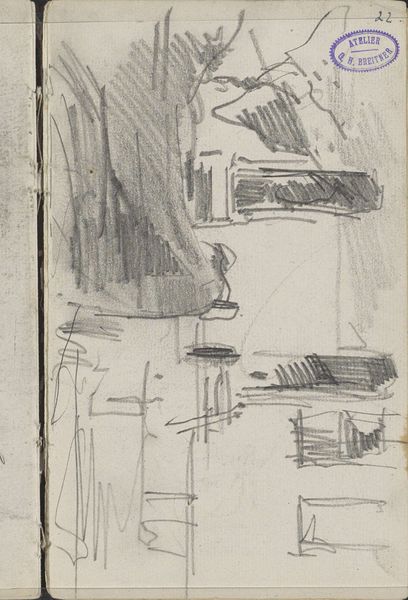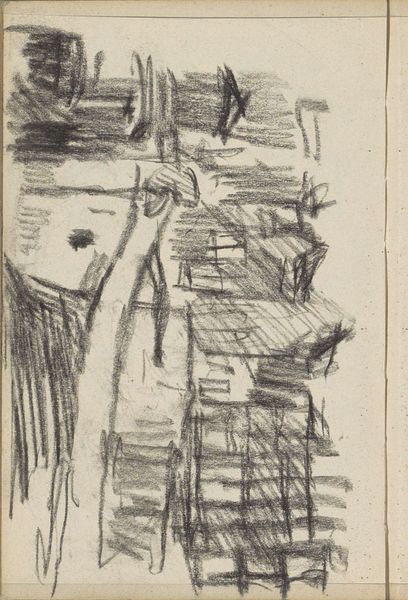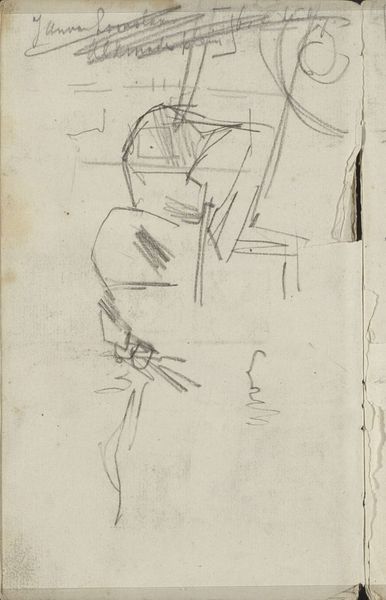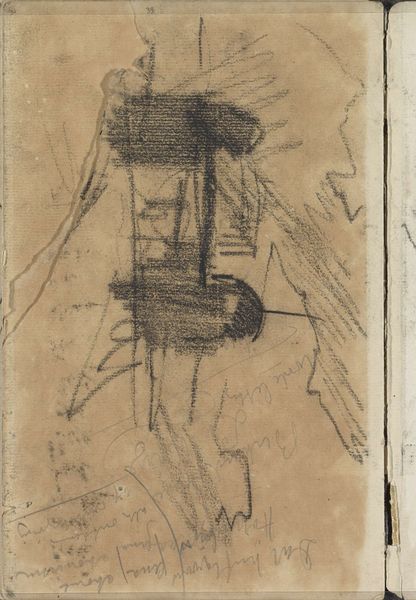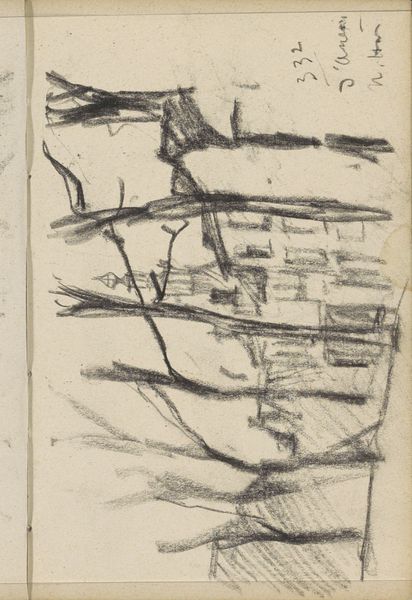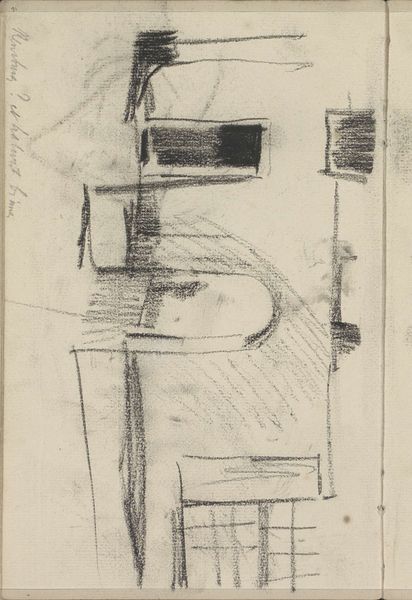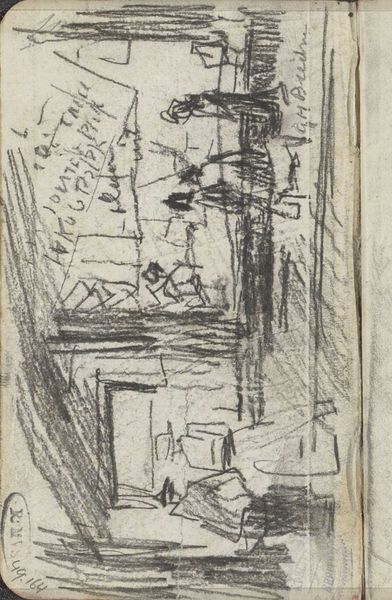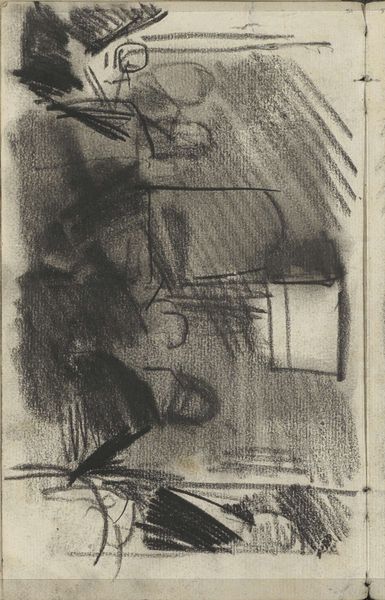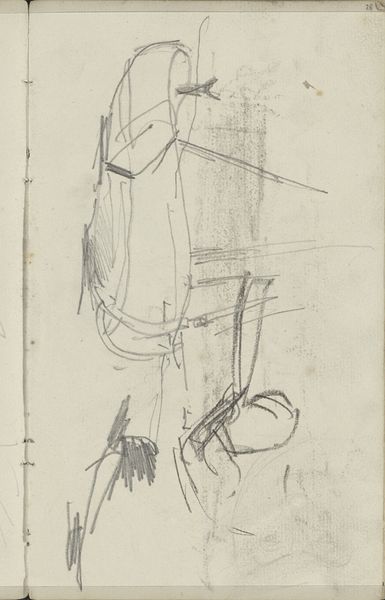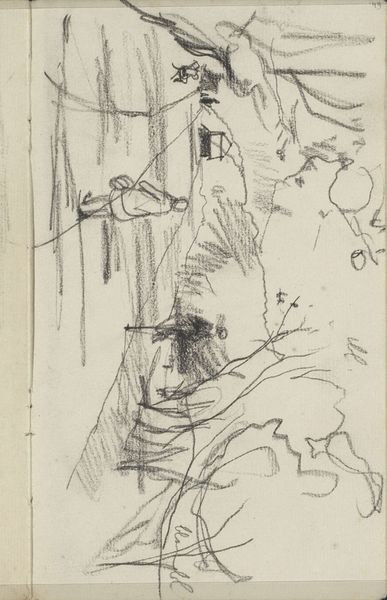
Copyright: Rijks Museum: Open Domain
Editor: Right, let’s talk about “Zittende figuren, mogelijk in een etablissement,” or “Seated Figures, Possibly in an Establishment” by George Hendrik Breitner, created sometime between 1886 and 1898. It's a charcoal drawing on paper. It strikes me as a really fleeting glimpse, like a scene quickly sketched in a smoky café. What catches your eye? Curator: You nailed it – it *is* fleeting, isn't it? It's almost as if Breitner dashed it off on a napkin while eavesdropping on some juicy conversation! I'm drawn to how he captures the atmosphere with such minimal lines. Notice how the charcoal isn’t just describing forms, it’s creating a mood—a little hazy, perhaps secretive. It begs the question, what stories are unfolding within those sketched walls? Editor: I hadn’t really thought about the storytelling aspect of it. Do you think this vagueness is typical for the Impressionist movement? Curator: Absolutely! Impressionism wasn't just about painting pretty landscapes, but it was also about capturing modern life, the hustle and bustle of the city. And think about the late 19th century: People are moving into urban centers, experiencing new freedoms and anxieties. An artist like Breitner captures that fragmented, almost dreamlike, quality of urban life, don't you think? Editor: I do! It’s almost voyeuristic. You’re observing people, but without context. Curator: Precisely. Breitner leaves breadcrumbs. The heavy charcoal hints at shadowy corners. This prompts viewers like us to imagine entire worlds into these incomplete, enigmatic figures. Do they have names? Backstories? Where will they be when the bell rings for closing? Editor: That's a really interesting way to think about it. I came in thinking about the style, the technique, but you’ve opened up the narrative aspect of what he's trying to capture. Curator: It's funny, isn't it? Sometimes the most incomplete sketches tell the most compelling stories. It has taught us something new about perception, interpretation and the power of art as an instrument for visual storytelling.
Comments
No comments
Be the first to comment and join the conversation on the ultimate creative platform.
